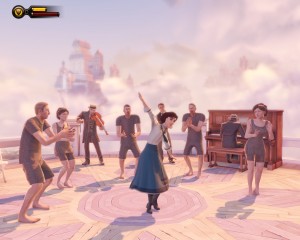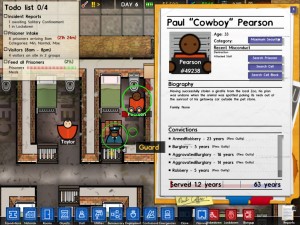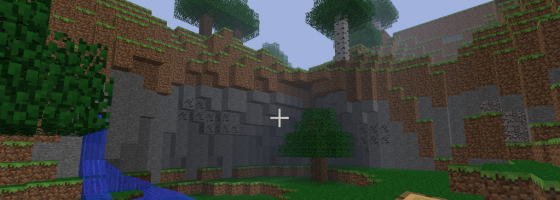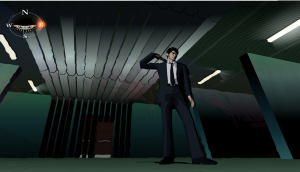Recently, there was an interesting piece posted on Polygon regarding early access and its impact on the game industry. A major point in the article was about how the most popular games on the early access program are those that the article defines them as “unfinishable.”
Unfinishable as written in the article, is used to define games that are continuously supported or developed with enough unpredictability that someone could never finish them. Personally I think the article is wrong in defining any game as unfinishable in either version of it.
Stick a Fork In It:
Let’s start with the first part of the designation, that games that are continuously updated can never be considered “finished.” The article refers to any game built to support continued development, meaning that story focused or linear titles like Gone Home, The Last of Us and so on don’t apply.
DLC or post release support has become a major change in game development over the years with the first major example in my mind would be Team Fortress 2. The article cites Crusader Kings 2 as another example which is apt thanks to Paradox’s business model.
Paradox has gone the route of releasing a lot of DLC content priced cheaply to spice up their games. Their content ranges from sprite packs, new music and all the way up to expansion content that focuses on specific parts of their design.
The point is that someone can enjoy CK2 for what it is without spending any more money other than the initial sale, but people who really enjoy the game can get a bit more millage out of making their game a bit fancier or adding more things to do.
Then we have early access or sandbox titles where the game is developed in such a way that new content can be made for it and added as supplemental to the main game. Minecraft featured a very basic system of interaction, but the options available to the player grew and grew over the years.
F2P games can also fit under this category such as League of Legends, who Riot Games has made a living on the fact that the game always has new content being developed for it.

AAA games like Bioshock were not designed to be replayable in the sense of having generated content and would not fit either condition of unfinishable.
Regardless, the point of the article is that these games where either DLC is developed or the game just gets more content after it’s released means that the game is always growing and can’t be considered finished.
The writer makes a good point about how these games are fundamentally different experiences from where they were at launch to where they are after a few DLC packs or updates.
And this can drive game critics up a wall as it’s becoming harder to know when to review a video game outside of the linear experiences. Whose to say that after a review goes up, that a new content patch is released that fixes all the complaints in the original piece.
But where I have to argue is that any video game, from 8 hour experiences to sandbox games do have a point where they’re “finished.” or ready to be released. Despite what anyone says about an early access or sandbox game, any game reaches a point in development where the developer says that it’s ready to be released or version 1.0.
Now, saying that a game is ready to be released can mean two different things. A game can be released when the developer says that there will be no more content being developed by them. Or it could mean that the core gameplay is completed to the point that the game can be sold.
As we know, the state of a “release point” may be a misnomer as sometimes a game may be forced to be released early due to financial issues. But more often than not, a game is released when the mechanics are in place and the game is stable enough to be sold.
Early Access throws a monkey wrench into that by the simple fact that developers are selling games that are nowhere near a state of being finished. Spacebase DF-9 by Doublefine was put up on Steam in Alpha 1 and Prison Architect by Introversion is still in alpha for over a year and continues to get new content on a monthly basis.
This confuses the general consumer thinking that what they’re buying is a product that is close to being done, but instead developers are simply reversing how games are paid for.
Normally developers will work on a game that is funded by either the company itself or a publisher who backs them until the game is done. Then the game is put out for sale and hopefully will recoup the money that was spent making it and then some for both the publisher and developer to actually earn money.
However, despite when the developer gets paid for their work, the game is still being worked on and does have a point where it is considered version 1.00 or release.

Prison Architect and other early access game have reversed the profit structure and changed the development timeline for a lot of indie games.
Arcen Games over the course of last year switched their design model by focusing on smaller experiences to test the waters as opposed to working on a massive game and rolling the die to see if it will be a hit.
This led to an incredibly shorten development cycle as they were releasing complete titles, but on a smaller scope. And if the game succeeded, Arcen already had a plan for how to continue developing and supplementing the game.
And while games like Skyward Collapse did change drastically from launch to their first major version update, it still had what was considered a release state or version 1.00. When Arcen felt that the core mechanics of the game were fleshed out enough for the game to be put on sale.
While game critics are having trouble deciding and some have even gone as far as reviewing early access games, I don’t see any problem here. Games are still being developed with an intended release state. The only difference is that now you have the option of buying and playing the game during its development.
When it comes to re-reviewing games due to patches and content updates, to me, it all depends on how much has been added and how long has it been since the review went up. If it’s been like six months to a year and there have been substantial patches released, then it’s okay in my book to give a second look.
MMOs especially fall into this group as for the ones that make it past a year plus like WoW, can be a vastly different game than it was at launch.
Moving on, let’s talk about the concept of games being designed as unfinishable and why that is not the case.
A Masterful End:
The other part of this article in terms of unfinishable games was about titles designed around replayability. Examples would be rogue-likes, sandbox and strategy games like Civilization, Crusader Kings 2 and so on. Basically games that are built around procedurally or randomly generated content where there is either no pre-establish end or the content has enough variety that the player can’t see everything.
The reasoning behind the article was that because these games are designed without having an established end, then that means that someone could just keep playing the game.
I don’t want this to come off as sounding insulting to the author, but whenever I hear someone talking about a video game being “never-ending” for any reason, I find that viewpoint a bit short sighted.

Despite being able to be played forever, strategy games like Crusader Kings 2 do have a point where you have seen everything it has to offer.
First is from the design point of view and how no matter what there is a finite amount of content in a game. Even games built around randomly generated content have some basis of linearity, such as defining the growth of the world, where items show up, etc.
Despite the game being different each time you play, the basic design of the world remains the same or close with each playthrough.
Going back to Minecraft, despite the game having new content added over the course of development and post release, the underlying mechanics remained largely the same. And once a player learns how the rules of the world work, a lot of the mystique of the game goes away which leads to the second problem: player mastery.
This goes back to the Chick Parabola coined by Tom Chick. Where after spending so much time learning Civilization 5, Tom reached a point where his complete understanding of the rules and mechanics of the game ruined his enjoyment and surprise at playing it.
So while Civilization 5 could be considered unfinishable as there is always another random map to play, Tom’s mastery meant that there was nothing new the game could throw at him and it was considered “finished” in his eyes at that point.
One of the clearest signs that I am no longer interested in a game is when I’ve seen everything the gameplay has to offer. Going back to my podcast on RPG design that was the main reason that I left Skyrim feeling so unfulfilled. Despite the huge world and places to explore, the gameplay had very little growth to it and I just became bored with it.
Some games effectively let the player decide when the game is “finished” for them. The Disgaea series from Nis America features easily a hundred plus hours of content by going after all the side quests, leveling characters up and so on. However the base mechanics don’t change as time went on.
For one person, beating the game means just seeing the game through to the end of the main story, while someone else may go for complete and utter mastery.
The point is that regardless of a game’s length, we all have a different opinion on completing a game.
For one person, they could spend months building the perfect castle in Minecraft while someone else may be done after building their first cabin. And to say that any video game could be considered unfinishable, in my opinion is not seeing the forest for the trees.
One final point, despite me stopping a game after reaching a point of mastery, I do make it a habit to replay games after enough time has pass that I can’t remember the experience clearly. For instance, while Killer 7 was an extremely linear game, that didn’t stop me from replaying it four different times over the last few years.
Early access and crowd funding has certainly thrown both consumers and critics for a loop with how game development has changed. But for me, I’m fine with waiting for the release version of a game before sinking my teeth into it. And while everyone has their one “if I’m trapped on a deserted island I would play ” game, even then you will reach a point where you have seen everything.



